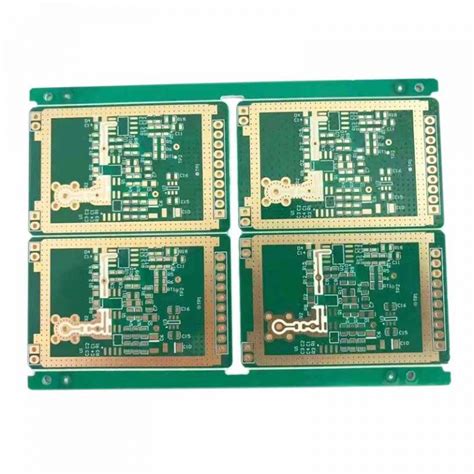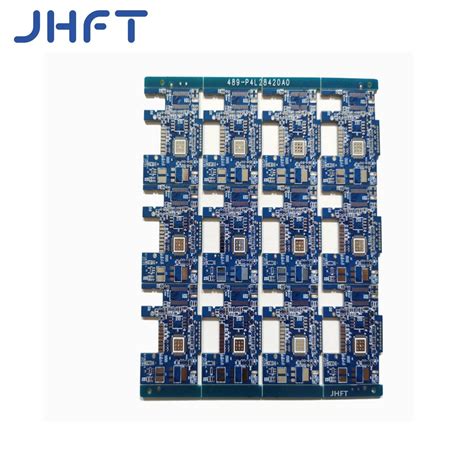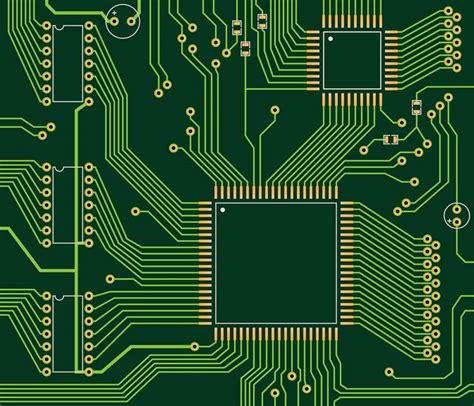The Impact of the IoT on the PCB Industry
Since the dawn of the dot-com bubble, the Internet of Things (IoT), nicknamed the “Fourth Industrial Revolution” or “Infrastructure of the Information Society,” has become a foremost movement. Its impact has become deeply woven into the fabric of technology and everyday life.
Many consumers may not realize that IoT PCBs are at the forefront of IoT’s penetration into everyday technology. Similarly, the IoT plays an integral role in the transformation of PCB design and manufacturing. As demand for more IoT devices grows, understanding the interconnection between IoT and Flex and HDI PCBs is becoming increasingly important for PCB designers.
What is the IoT?
The IoT is the intersection between the physical and digital worlds, brought about by the creation of devices beyond PCs connected to IP networks. Smartphones may be the most prominent example of the IoT, but more recently, the development of applications for controlling home appliances and utilities, as well as the introduction of wearable technology and data-enabled vehicles, demonstrate the boundless potential of the IoT.
Consumer electronics may be the first innovation that comes to mind, but manufacturing, transportation, and healthcare are even ahead of personal cars and electronics in leading the IoT revolution. As a result, these large industries require innovative PCB designs that offer flexibility and high-speed connectivity to streamline processes globally.
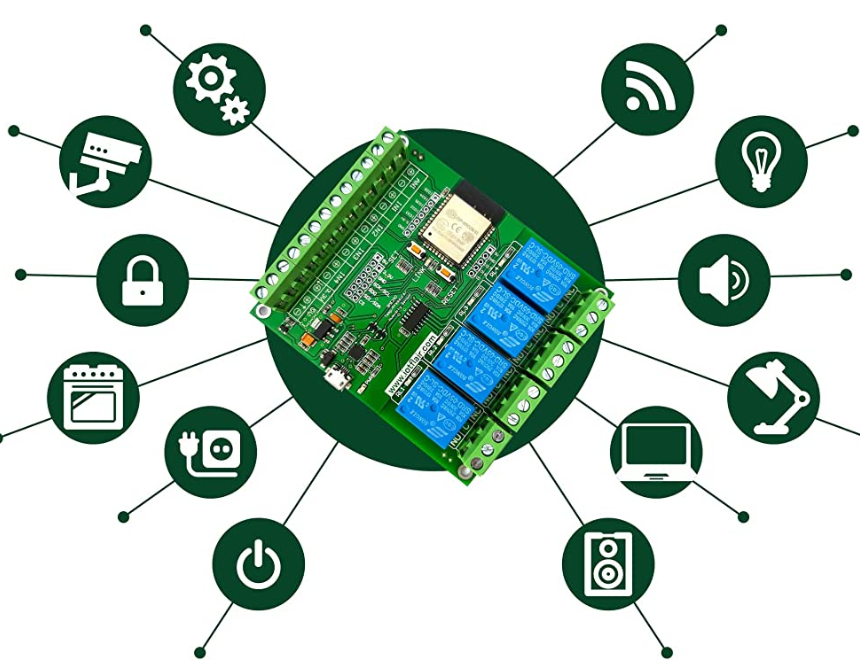
IoT-Driven PCB Applications
PCBs are central to enabling electronic devices to deliver IoT capabilities like those found in smart home applications or mobile screens in car dashboards. However, the IoT is also influencing PCB design and applications to meet the growing demand for new ways to use the internet, including:
Sensors and cameras in cars and home utilities provide new levels of efficiency, convenience, and safety.
Fitness trackers, whose data can be analyzed remotely.
Light bulbs that change color to create customized moods for different rooms and can be managed from tablets or even smaller smart devices.
Grid layouts in shopping malls or amusement parks monitor consumer routes, providing customized sales opportunities for retailers and customers.
Whether monitoring train arrival times and maintenance needs to create reliable shipping schedules, or tracking real-time traffic via satellite to optimize personal GPS navigation in car dashboards, PCBs make all these new ideas possible. In medical devices and wearables, the IoT will not be as viable today or as promising in the future without changing PCB form factor design to provide the flexibility to fit any shape or high density to fill tight spaces with high-power functionality.
IoT Opportunities with Flex and HDI PCBs
Gone are the days when the shape and size of a computer were dictated by the structure of its essential internal components. Now, the industry is seeking to create an optimal IoT product that functions identically regardless of form factor. Reimagining internal circuitry to reflect this change in approach has become crucial.
To achieve new forms of functionality and sustainability, printed electronics are leading the way in complex manufacturing. Flexible PCBs and high-density interconnect (HDI) PCBs offer the design freedom to meet the demands of high power within increasingly tight board spaces, withstand harsh environments and constant device stress, and possess high copper tensile strength.
Advantages of Flexible Printed Circuit Boards and the IoT
Introducing flexible PCBs can significantly reduce design constraints that you might encounter with more rigid traditional PCBs. Thanks to the beneficial features of flexible PCBs, flexible board structures not only pave the way for a revolution in the forms and shapes our electronic products can take, but also reduce costs and errors. Some of the best attributes that make flexible PCBs suitable for IoT designs include:
Smaller size: Large rigid PCBs limit design freedom but often take up more space within a product. By reducing volume, flexible PCBs allow components such as microphones, satellites, and batteries to be packed into a small package without compromising performance. Thin components also allow flexible PCBs to support denser circuits.
Lighter weight: Taking up less space, weight can be saved by up to 95%. Lightweight internal component options make IoT devices more versatile across a variety of uses and environments, such as delicate surgical equipment or wearable hearing aids.
Higher resistance: Flexible PCB materials offer increased durability, improving resistance to stress caused by shock or vibration. The use of IoT PCBs is expanding in industrial environments, where flexible PCBs can withstand harsher conditions. Similarly, for devices like fitness trackers, flexible PCBs can resist errors caused by regular exercise, body heat, or moisture.
Cleaner Routing: Flexible PCBs eliminate mechanical connectors, simplifying wiring methods. This simplified routing becomes a valuable asset when imagining how IoT capabilities can improve the complex mechanical structure under the hood of a car.
The flexible materials used as circuit connectors in flexible PCBs open up endless possibilities for mobile devices and movable components, making them an incredible tool for a wide range of IoT endeavors. If you and your company are about to launch a novel flexible printed circuit board, be sure to contact MCL for answers on the best flexible PCB material for your industry and a manufacturing quote.
To accommodate the smaller footprints possible with flexible PCBs, HDI PCBs offer the highest board density for optimal circuit performance.
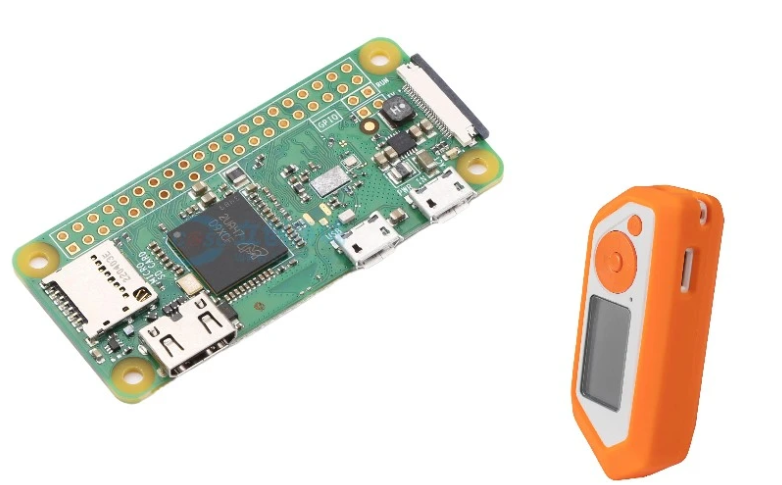
Benefits of High-Density Interconnect PCBs and the IoT
As a leader in the smaller package designs we see in personal electronics today, high-density interconnect (HDI) PCBs are an essential tool. When facing the big picture of the IoT, designers and manufacturers need to consider the advantages of these boards, including their speed and reliability. Some of the best aspects of HDI PCBs for the IoT include:
Reduced size and weight. HDI PCBs are known for their dense component placement. Thanks to stacked microvias and other features that help save board space, they offer finer trace widths and excellent routing density. Smaller boards mean more versatility, making them ideal for use with the evolving strategies of the IoT.
Clean circuit routing. HDI boards feature blind or buried vias and microvias to smooth out dense sections of circuitry, providing a variety of routing options. Furthermore, designers can replace through-holes with microvias, which, along with shorter distances between components, improves signal integrity. Optimal performance in a small space makes HDI PCBs essential for IoT optimization.
Improved cost-effectiveness. Higher energy efficiency and reduced need for delamination make products more cost-effective in both implementation and production. The smaller size also allows for the use of less material to create functional boards.
HDI boards are most commonly used for their miniature size and the reliability they offer in creating smart IoT devices. Due to their high circuit density, you may want to trust only experienced HDI PCB suppliers, who require exceptional care during the manufacturing process.
Whatever your application for high-density interconnect PCBs, learn more about MCL’s quick quote service to find the printed circuit board that suits your needs.

Combining Flex and HDI Approaches for the IoT
Industry leaders are committed to combining flex and HDI strategies to create the most efficient and attractive designs. Some of the benefits of these approaches include high copper tensile strength, enabling electronics suitable for harsh environments, improved signal quality, and reduced thermal stress.
The IoT requires the ability to adapt small devices to a variety of uses, making the dimensional freedom of flex and HDI PCBs crucial. When selecting the optimal PCB for your next IoT design, keep in mind the range of IoT PCB design requirements to ensure optimal performance.
PCB Design Requirements for the IoT
The IoT is forcing designers to ask questions they haven’t encountered before. Rather than considering how consumers interact with electronic products, it’s becoming increasingly standard to assess how they interact with traditional, low-tech goods. As a result, PCB design approaches are changing, and with the increasing demand for household products to become IoT devices, minimizing reliability and assembly errors is more crucial than ever.
Changes in the IoT PCB Design Process
The process of creating an IoT-optimized product begins with evaluating new form factors and then transitions to selecting PCB materials and layout. The requirements for assembly into a complete product need to be considered throughout the product design process.
One of the most challenging aspects of the IoT is the intersection between mechanics and electronics, between the product itself and the PCB form factor. Collaboration between PCB designers, mechanical designers, and electrical engineers throughout the design process is becoming increasingly crucial, unlike the assembly line simulation procedures of yesteryear.
IoT PCB Design Tips and Advice
When designing the ideal PCB for the IoT, you’ll find several key design areas that require special attention. Here are some of those areas, along with tips for making your PCB as perfect for IoT as possible:
Size Requirements. Small devices are only getting smaller. PCB designers no longer have extra board layout space for strategic placement of traces, vias, and components. Achieving proper functionality and flexibility within small forms is now only possible with HDI and rigid-flex boards. With these smaller form factors, it’s more important than ever to ensure all IoT product designers are on the same page from the beginning of the design phase.
Product Fitment. Beyond the PCB’s size, you’ll also need to conduct sufficient virtual prototyping to ensure you can easily fit your design into the intended IoT form factor. Circuitry in the IoT often requires working with non-traditional materials for optimal functionality, and you may find yourself opting for mesh or plastic components in your design, as you might expect.
l Human Body Adaptability. Another set of qualities that require thorough simulation testing to optimize are mechanical properties affected by human temperature, humidity, and constant motion. Naturally, this applies only if the final IoT product is intended to be wearable or in contact with human skin. Pay close attention to thermal effects and, if necessary, design for adequate cooling.
l Energy Consumption. IoT devices demand the utmost in battery life and power integrity, as these devices are constantly communicating with their network. Energy consumption within each circuit block on the PCB needs to be tightly controlled within budget to help the entire product stay within the appropriate power consumption range. The key is to accurately plan power consumption and track your plans by thoroughly testing the PCB through various duty cycles, including transmit and standby power states.
l Reliability Standards. Industry specifications for the reliability of electronic devices are constantly evolving. For example, flexible circuit boards have various “dos and don’ts” to ensure they are reliable enough to withstand constantly changing pressures and environments. Consumers want assurance that their devices will function properly and remain accurate over time. Designers are designing for stresses that expose them to a variety of potential conditions, so many turn to simulation software to test their designs.
l Wireless Connectivity. The internet is the new Internet of Things, and being able to access it is a core requirement for any IoT PCB. Collecting and transmitting data about the surrounding environment requires installing the right wireless modules and RF circuit components. To select the right parts, you need to keep in mind power consumption, network range and speed, and any security requirements.
Through proper communication with other designers of the product and careful testing, you may need to invest considerable time to finalize the design. However, with the high demand for IoT and its essential functions, you won’t regret ensuring the durability and reliability of your PCB in a variety of changing environments.
The Future of IoT PCB Design
As the industry evolves and expands, there are questions about whether PCB design for IoT will become more customized or standardized. While each IoT device has its own unique characteristics, there are some common requirements, which may suggest a trend toward mixing and matching many of the same design protocols over and over again.
The IoT has brought countless new challenges and attempts to the PCB industry, and we are only now beginning to see how the two will continue to interact, blurring the lines between electrical and mechanical and, over time, creating even smaller, high-performance microcomputers. Demand is expected to continue growing, and these devices may carry us into an indefinite future filled with technological power and innovation.


